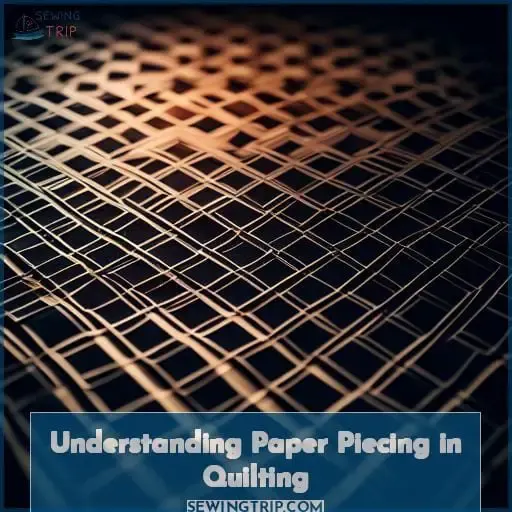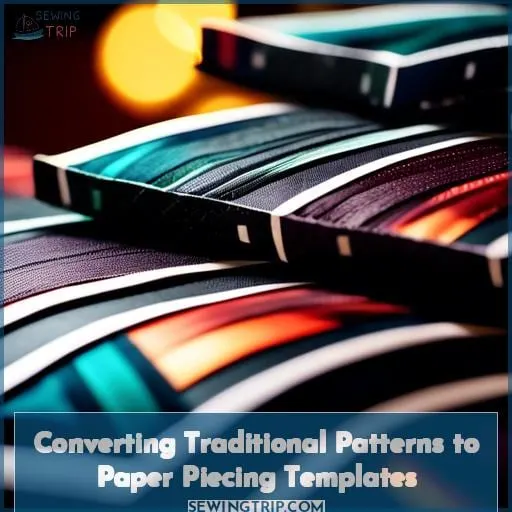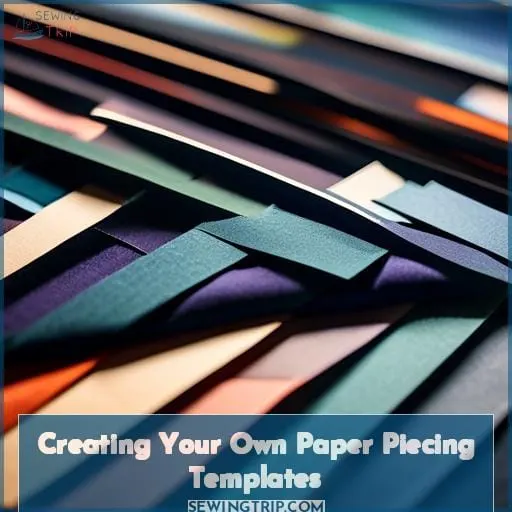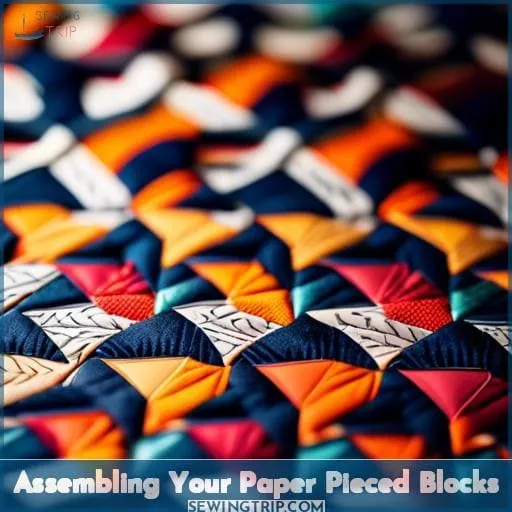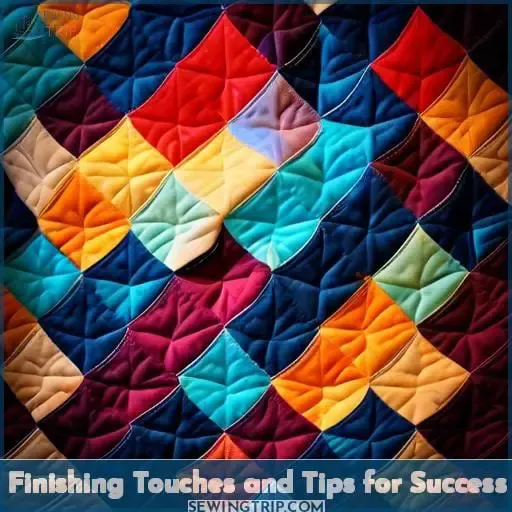This site is supported by our readers. We may earn a commission, at no cost to you, if you purchase through links.
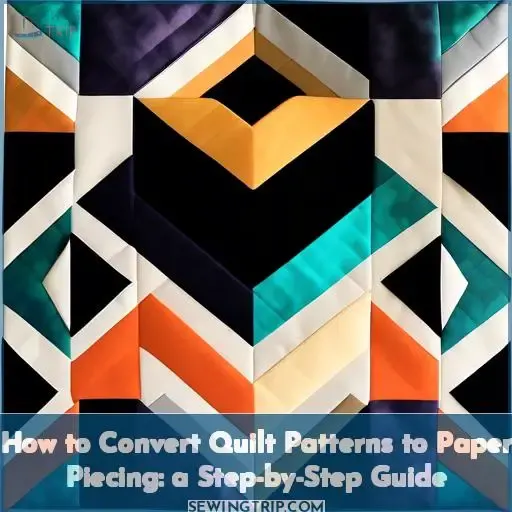 Transforming traditional quilt patterns into paper piecing projects opens a world of precision and creativity for quilters.
Transforming traditional quilt patterns into paper piecing projects opens a world of precision and creativity for quilters.
This guide will walk you through the process, from understanding the basics of paper piecing to converting and creating your own templates. You’ll learn how to assemble your blocks with accuracy and add those finishing touches that elevate your quilt.
Whether you’re seeking to master new skills, innovate with your designs, or simply achieve perfection in your quilting projects, this step-by-step guide is your pathway to success.
Let’s dive into the world of paper piecing and explore how to bring traditional quilt patterns to life with a new twist.
Yes, you can convert a quilt pattern to paper piecing by analyzing the pattern to identify sections that can be paper pieced, creating templates for these sections, and then assembling them in the correct order.
This process involves problem-solving and adjusting seam lines for a paper-piecing-friendly design.
Table Of Contents
Key Takeaways
- Break down the quilt pattern into manageable sections, ensuring each section can be sewn without overlapping and includes a quarter-inch seam allowance for precision.
- Adjust seam lines to create a similar version of the block that is suitable for paper piecing, particularly when dealing with complex patterns or intersecting seams.
- Utilize tools like the Add-A-Quarter Ruler for accurate seam allowances and software such as Electric Quilt 8 (EQ8) for designing paper piecing templates.
- Combine paper piecing with traditional quilting techniques for blocks that are not ideal candidates for full paper piecing, focusing on maintaining the design’s contrast and color balance.
Understanding Paper Piecing in Quilting
Diving into the world of quilting, you’ve likely heard whispers, if not full-blown conversations, about paper piecing. It’s like the secret sauce that turns good quilts into great ones, allowing for precision that can make your quilting buddies green with envy.
At its core, paper piecing basics involve sewing fabric onto a paper template, a method that turns complex patterns into manageable, bite-sized pieces. This technique is a game-changer, especially when tackling intricate designs or when your fabric scraps seem to outnumber your quilting ambitions.
The advantages of paper piecing are many. Imagine sewing tiny pieces with laser precision, or transforming those odd-shaped leftovers into a stunning quilt block without breaking a sweat. It’s like having a quilting superpower, where the usual rules of cutting and seam allowances take a backseat, letting you focus on the fun part.
However, it’s not all sunshine and rainbows. The challenges of paper piecing, like the initial learning curve and the task of removing the paper afterward, can be daunting. Yet, with the right paper piecing techniques and materials, these hurdles become stepping stones to mastering this art.
So, why venture into paper piecing? Beyond the allure of accuracy, it’s about pushing boundaries and exploring new territories in your quilting journey. Whether you’re a seasoned quilter or a curious newcomer, paper piecing opens up a world of possibilities, inviting you to experiment, innovate, and perhaps, even surprise yourself with what you can achieve.
Converting Traditional Patterns to Paper Piecing Templates
To transform your beloved traditional quilt patterns into paper piecing marvels, you’ll need to think like a puzzle master.
-
Identify Sections: Break down the pattern into manageable sections, like a chef carving a turkey. Think about the paper piecing limitations and how you can work around them. Each section should be a piece of fabric that can be sewn without crossing over another. If your pattern is a jigsaw puzzle, you’re looking for the corner pieces first.
-
Create Templates: Draft your paper piecing templates for each section. This is where your paper piecing designs come to life. Remember, you’re the architect now, drawing blueprints for your fabric building blocks. Ensure that all templates include a quarter-inch seam allowance, so your pieces fit snugly together like a hand in a glove.
-
Test and Adjust: Before you dive into cutting your precious paper piecing fabric, make a test block. It’s like a dress rehearsal before opening night. This step will help you catch any potential hiccups and refine your paper piecing techniques. If your test block is a hit, you’re ready for the big show!
By following these steps, you’ll be able to convert any traditional quilt pattern into a paper piecing masterpiece, ensuring each piece fits perfectly in its place, just like the final note in a symphony.
Creating Your Own Paper Piecing Templates
After mastering the art of converting traditional quilt patterns into paper piecing templates, you’re now ready to dive into the creative pool and design your own paper piecing templates from scratch. This journey from adaptation to creation is where your quilting skills truly shine, allowing you to bring unique visions to life.
First off, let’s talk tools and software, your new best friends. For precision and ease, the Add-A-Quarter Ruler is a game-changer. Its ingenious design lets you add that crucial quarter-inch seam allowance effortlessly, ensuring your pieces fit together perfectly.
But, the real magic happens when you pair traditional tools with modern technology. Software like Electric Quilt 8 (EQ8) offers a sandbox of possibilities, allowing you to design, tweak, and perfect your patterns with a few clicks.
Its intuitive interface and vast library of blocks and fabrics make it a favorite among quilters for a reason.
Creating your own templates is like painting with fabric; you’re the artist, and your palette is boundless. Start simple. Sketch your ideas, no matter how rough. Then, bring them into EQ8 or another design software to refine your vision.
Experiment with colors and textures, playing with the software’s tools to see your concept come to life. Remember, every masterpiece starts with a single stitch, and every quilter was once a beginner.
So, embrace the process, learn from each attempt, and soon, you’ll be crafting paper piecing templates that are uniquely yours, ready to be transformed into quilting masterpieces.
Assembling Your Paper Pieced Blocks
Now that you’ve got your paper piecing templates ready, it’s time to dive into the nitty-gritty of assembling your blocks.
- Align Your Paper: Before you stitch, ensure your paper alignment is spot on. This is your roadmap, so treat it like the treasure map it is—X marks the spot for seam accuracy.
- Tackle Those Angles: When you hit an angle precision is key. Think of it like origami with fabric; every fold and crease must be crisp. If you’re navigating the Bermuda Triangle of quilting, remember: accuracy is your compass.
- Manage the Curves: Handling curves can be like wrestling an octopus. To avoid fabric stretch, pin like you’re securing a tent in a gale—your block’s life depends on it.
Finishing Touches and Tips for Success
Once you’ve assembled your paper pieced blocks, it’s time to add those finishing touches and arm yourself with tips for success.
- Removing paper: Gently tear away the paper from the back of your blocks. If the paper resists, try a spritz of water to help it along, but don’t drench your masterpiece!
- Pressing seams: Press your seams with zeal, but not too much steam. You want them flatter than a pancake on a Sunday morning.
- Assembling top: Lay out your blocks and join them with precision. Think of it as a dance where each step is measured and every twirl is calculated.
Troubleshooting challenges along the way is part of the quilting journey. If your points aren’t matching, take a seam ripper to it—think of it as a do-over button. Remember, practice makes perfect, and every stitch you take is adding to your story quilt.
Frequently Asked Questions (FAQs)
How can I ensure my fabric choices maintain the original design’s contrast and color balance when converting to paper piecing?
To keep your quilt’s zing when switching to paper piecing, stick to the original’s light, medium, and dark fabric values.
It’s like a dance—each step, or fabric choice, must complement the others to maintain that visual harmony.
What are the best practices for working with batiks or other tightly woven fabrics in paper piecing?
Imagine your fingers dancing over the vibrant, tightly woven canvas of batik fabrics, each piece a testament to the art of dye resistance.
When paper piecing with these gems, treat them like the treasures they are. Use a sharp, fine needle to glide through their dense weave, pairing it with a slender thread that complements their strength without overpowering.
Pre-wash these beauties to unveil their true colors and dimensions, ensuring they play well with others in your quilt’s fabric mosaic.
This dance of preparation and precision will transform your paper piecing project into a masterpiece of texture and color.
Can I mix paper piecing with other quilting techniques within the same project, and if so, how?
Absolutely, you can mix paper piecing with other quilting techniques!
It’s like a quilt buffet—pick a bit of appliqué, a dash of traditional piecing, and sprinkle in some paper piecing for sharp detail.
It’s your creative feast!
How do I handle paper piecing with irregular or curved shapes that don’t fit traditional straight-line methods?
For those pesky curved shapes in paper piecing, you’ll want to pin at small intervals and sew slowly.
What strategies can I use to minimize fabric waste when creating and using paper piecing templates?
Nearly 85% of quilters say minimizing waste is a top priority. Your secret weapon? Pre-cutting fabric using your paper templates.
It’s like having a roadmap before you hit the gas—no more aimless fabric journeys, just straight to the point precision.
Think of it as quilting with a GPS; you’ll never wander off into the wasteland of excess fabric again.
Conclusion
With over 80% of quilters expressing a desire to learn new techniques, converting quilt patterns to paper piecing is a fantastic way to innovate and perfect your quilting projects.
You’ve now journeyed through understanding paper piecing, converting traditional patterns, creating your own templates, assembling blocks, and applying finishing touches.
Embrace the challenge and let your quilting journey be as rewarding as the beautiful creations you produce.

